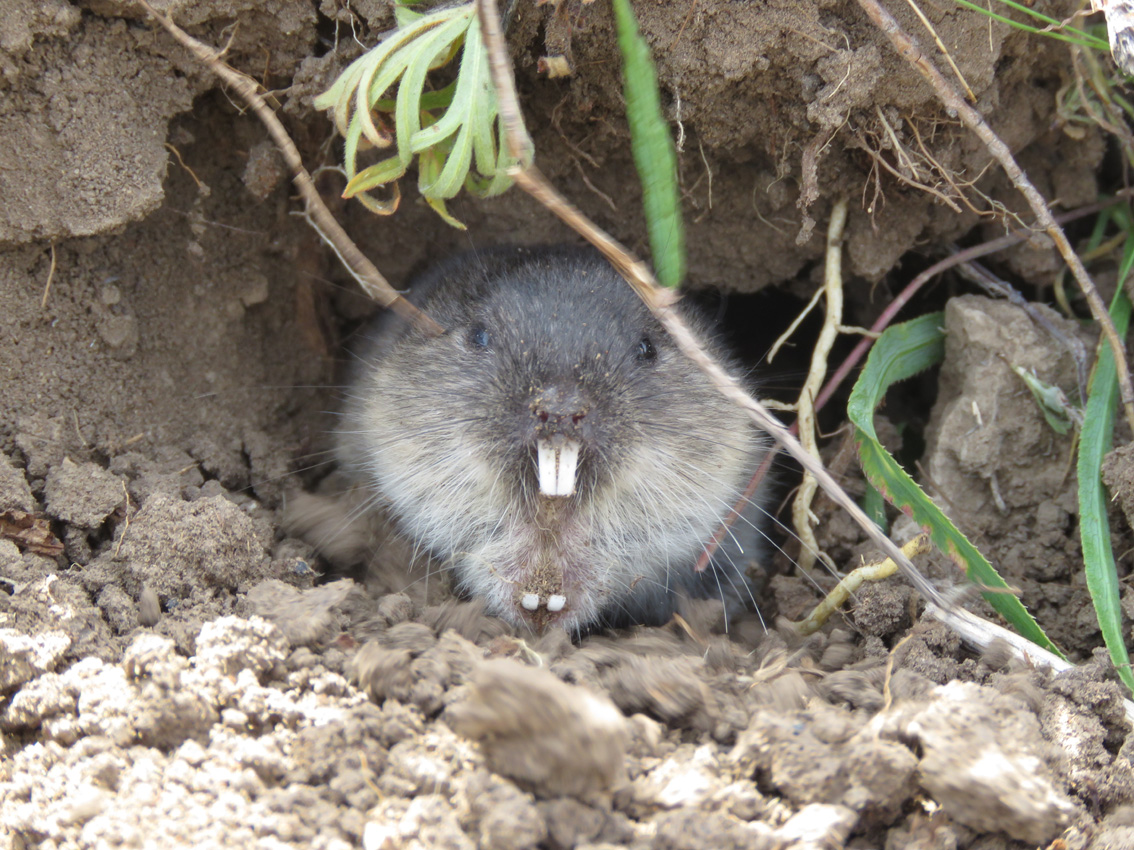
Mole voles live in large groups underground and rarely come to the surface. Scientists from the St. Petersburg and Moscow universities and the A.N. Severtsov Institute of Ecology and Evolution of the Russian Academy of Sciences (IEE RAS) were able to experimentally model the interactions of animals in underground tunnels, where vision is useless, and discovered that peaceful communication between these rodents during burrowing occurs using ultrasound and sound signals.
This study began with a failure: the first field season to study the acoustic communication of mole voles in the Saratov region did not yield the expected results. The original design of the experiments on the interaction of two captured animals included a rectangular container divided in half by a partition with a slit at the bottom, through which, as expected, the mole voles would communicate with each other using sounds and ultrasound. However, the animals refused to communicate and either hid in the corner of their section of the container or tried to escape by jumping on the walls of the container. It became clear that this experimental setup was not suitable and that another one had to be devised that would better take into account the biological characteristics of these underground burrowing rodents.
The new idea turned out to be surprisingly simple and effective. Since mole voles are burrowing animals, it was necessary to simulate a meeting of two animals digging the earth in an underground tunnel. Thus, an experimental test was devised to release two mole voles into a circular hole filled with earth.

Two mole voles dig soil poured into a gap between a small bucket inserted upside down into a larger bucket. Sooner or later the animals meet and almost always greet each other with a series of ultrasounds. Peaceful ultrasound communication occurs not only between members of the same family, but also between unfamiliar animals, even adult males caught several hundred meters from each other. Aggressive interactions with loud vocal cries were extremely rare (in 2-3% of placements), and in these cases the test was immediately stopped and the animals were separated.


In addition to the experimental test simulating a meeting of two mole voles in an underground tunnel, ultrasounds were also recorded during measurements of the two upper incisors, which the animals use to gnaw the soil when digging. The incisors of rodents grow throughout their lives and their size reflects the age of the animals. During the measurements, which were carried out using an electronic caliper, the animals were held up by hand. The mole voles did not like either the holding or the measurement of the incisors, so this was considered a discomfort test. At the end of the day, all the animals of one family were simultaneously released into their home burrow and the sounds and ultrasounds emitted during this were also recorded (return test). A total of 145 tests were carried out in three situations, of which 2,370 calls were identified and analyzed, which were classified into 8 different types. Three types of calls were audible to humans, three were ultrasonic, and two covered both audible and inaudible frequency ranges for humans. Six types of calls were first described for mole voles.

Не было обнаружено связи между акустическими параметрами типов криков слепушонок и показателями размеров животных (веса тела и ширины двух верхних резцов). Между самцами и самками, различий в структуре типов криков также обнаружено не было. Дискриминантный анализ, проведенный отдельно для звуковых и ультразвуковых типов криков, подтвердил сделанную классификацию всего массива криков на типы.

Different types of calls were predominant in different experiments: sonic warbles and ultrasonic rising calls occurred during peaceful interactions between animals; sharp sonic squeaks and screams and high-frequency ultrasounds were associated with discomfort during dental measurements; and hisses were emitted only when the animals were released into the burrow, when the mole voles were diligently burying the dug tunnel. One type of ultrasonic calls, variable, was not associated with a specific situation and could occur in any of the three tests. Based on the presence and absence of certain types of calls in the tests, it was possible to assess their potential communicative role.
The results of the study were published in Q1 of the Journal of Mammalogy: Dymskaya M.M., Volodin I.A., Smorkatcheva A.V., Rudyk A., Volodina E.V., 2024. Field tests reveal acoustic variation of call types in a subterranean rodent, the Northern Mole Vole Ellobius talpinus. Journal of Mammalogy, gyae123.
